Learn what to do if you cannot access your iCloud or Apple Account settings because they’re grayed out or unclickable on your iPhone, iPad, Mac, or web browser.
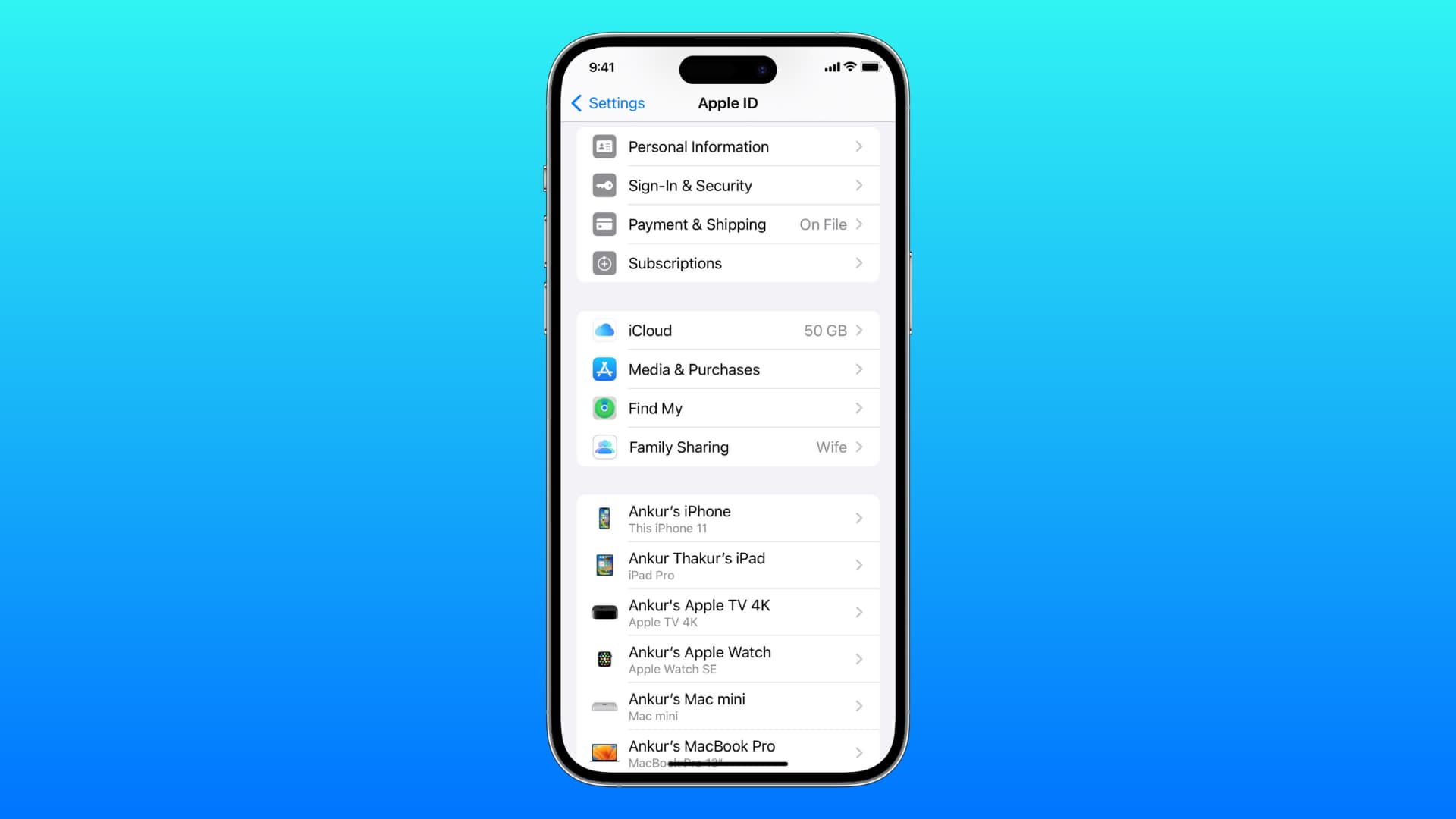
Signing in to your iCloud or your Apple Account and accessing its settings is important because it allows you to review and update your personal Apple ID information, manage sign-in and security, add or change payment methods, see and cancel your active subscriptions, restore deleted files, bookmarks, contacts, and a lot more.
How to access your iCloud or Apple Account settings
Before moving on to the fixes, you must know where to access these settings.
On iPhone and iPad: Open the Settings app and tap your name from the top.
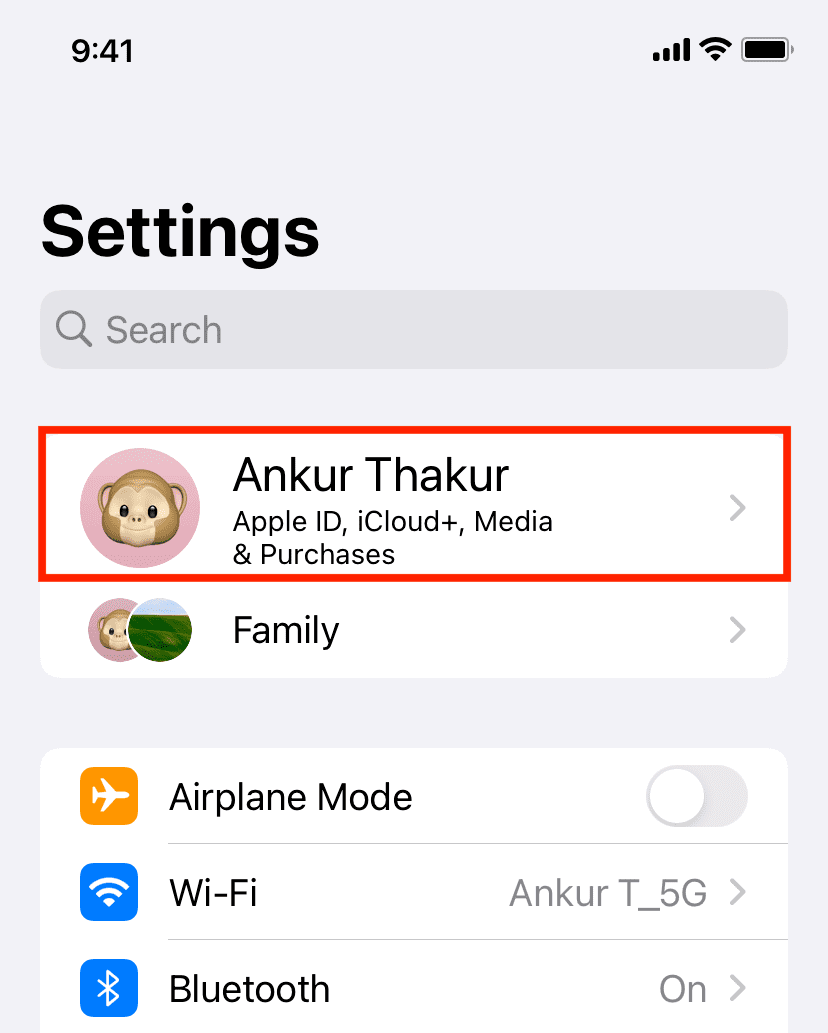
On Mac: Open System Settings and select your Apple Account from the top left.
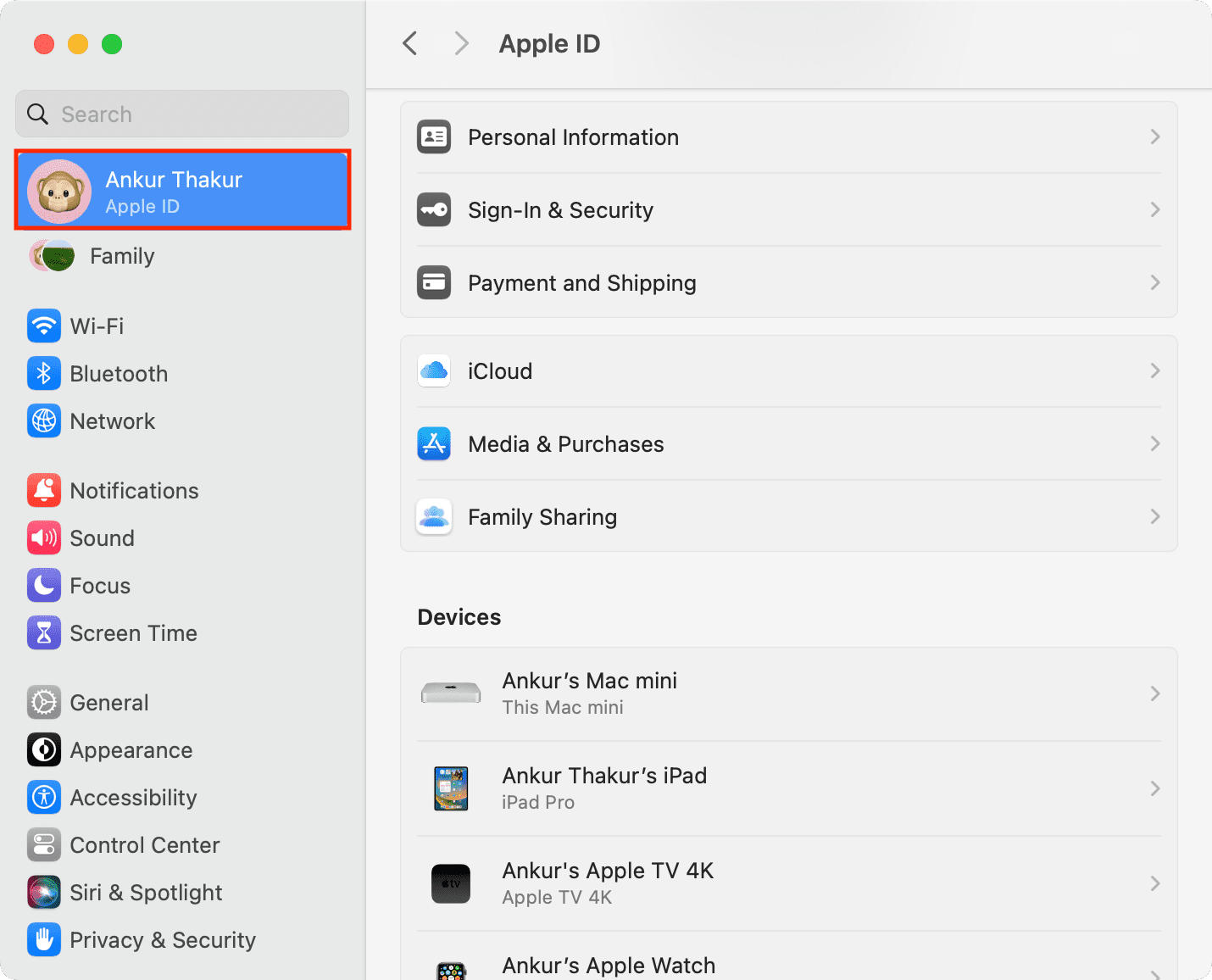
In a web browser: Visit icloud.com/settings and sign in using your Apple Account email address and password (or Touch ID/Face ID/device passcode if you’re in Safari). From here, you can also access your Apple Account settings by clicking appleid.apple.com.
Now you know where to look for your iCloud settings, but if you can’t tap, go inside, or change them, the solutions listed below should take care of the problem.
1. Force quit settings
You may not be able to get inside your Apple Account settings because the Settings app has a temporary bug or glitch. Simply closing and reopening it should help.
On iPhone or iPad: Swipe up from the bottom of the screen and hold to see all open apps in the App Switcher. Now, drag the Settings app all the way up to close it.
On Mac: Click the Apple icon and choose Force Quit. Select System Settings and click Force Quit.
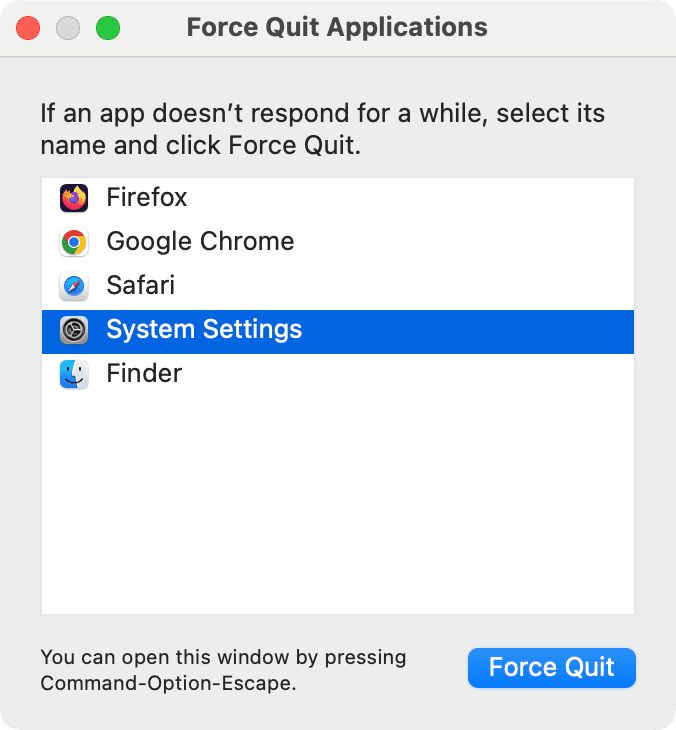
After waiting for about five seconds, reopen the Settings app or System Settings, and you should be able to get inside your iCloud/Apple Account settings.
2. Agree to pending terms and conditions from Apple
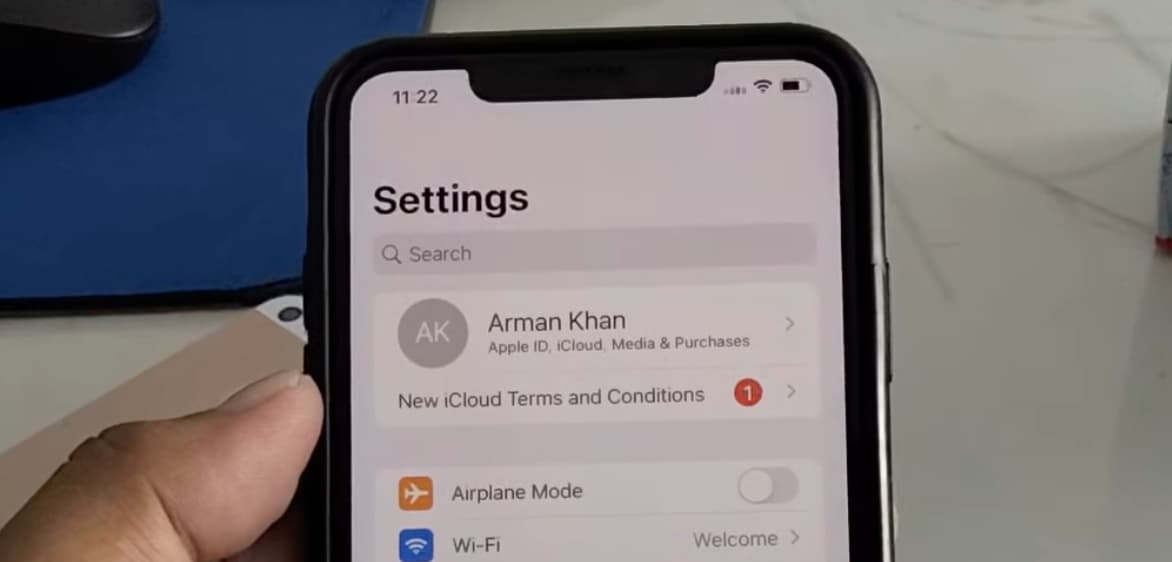
When you open the iOS Settings app or macOS System Settings, look for an option at the top showing you “New iCloud Terms and Conditions” or something similar. Select it, review the new terms, and agree to them (if you do).
3. Restart your iPhone, iPad, or Mac
The Apple Account tile at the top of Settings or System Settings may be grayed out because of a minor glitcs, which can be fixed by turning off your iPhone or iPad and turning it back on. On Mac, click the Apple icon from the top left corner of the screen and choose Restart.
4. Ensure you have a solid internet connection
You may be unable to access and tweak your iCloud or Apple Account settings if your phone or computer’s Wi-Fi or cellular connection is weak and inconsistent. Fix any relevant Internet issues, and then try again.
5. Turn off your VPN
If you’re using a VPN, try turning it off, and then you should be able to get inside and change your iCloud or Apple Account settings.
6. Try connecting to another Wi-Fi network or personal hotspot
In some cases, joining another Wi-Fi network can help. If you don’t have access to another network, use cellular data or your iPhone’s Personal Hotspot.
7. Turn off Screen Time restrictions
Screen Time can be used to restrict some functionality on your iOS devices. Head over to iPhone Settings > Screen Time > Content & Privacy Restrictions and turn off the switch for Content & Privacy Restrictions.
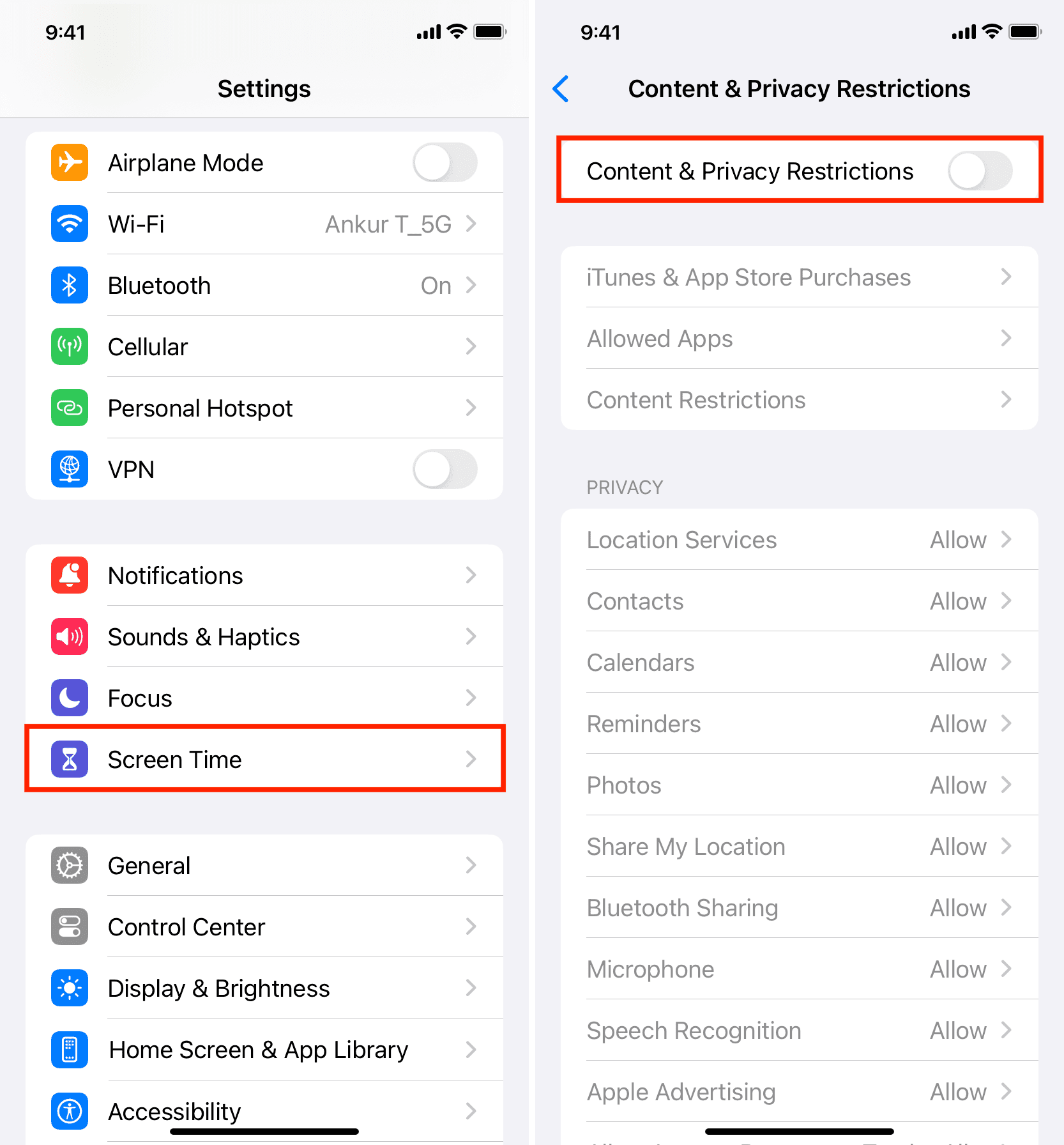
Now, force quit and reopen the Settings app, and you should be able to access your iCloud/Apple Account settings.
Important: You may not be able to access or disable Screen Time restrictions if:
- You are a child, and your parents or guardian manages your device.
- You have forgotten your Screen Time passcode.
8. Check Apple’s server status
Apple’s system may be unresponsive because of an outage. Quickly check their server status, and if you see an issue with Apple Account or iCloud Account & Sign In, you’ll have to wait a while until it’s fixed by Apple engineers.
9. Retry after a while
Even when everything, including Apple’s servers, seems fine, I recommend waiting for a couple of hours. In some situations, simply having a little patience does the trick.
10. Update your device
Running an outdated version of iOS, iPadOS, or macOS can be the cause of the problem. Before moving to the remaining solutions, head over to iPhone or iPad Settings/Mac System Settings > General > Software Update and get the latest version of the operating system currently available.
11. Remove installed configuration profiles
If you have installed extra configuration profiles, they may prevent you from accessing your Apple Account and iCloud settings.
- Open your iPhone or iPad Settings > General > VPN & Device Management and remove the unrecognized profiles you don’t remember installing.
- On Mac, you’ll have to go to System Settings > General > Device Management. On older versions, go to Privacy & Security > Profiles instead.
Important: If the iPhone, iPad, or Mac is given to you by your office or educational institution or managed by them, you should not and may not be able to remove the configuration profile. In these cases, it’s best to contact the concerned office/college technical admin for help.
12. Reset network settings or all settings
You may not be able to access or change your iCloud or Apple Account settings because of network issues or conflicting settings. Start by resetting the network settings, and if that doesn’t help, go ahead and reset all iPhone or iPad settings.
13. Sign out of Apple Account and sign back in
Finally, if you can tap the Apple Account tile in Settings or System Settings but cannot go beyond it or change the settings there, then the best way to fix that is by signing out of your iCloud/Apple ID account and signing back in. If the Sign Out button is grayed out, learn how to fix that first.
If you can’t log in using a web browser
Are you trying to log into iCloud or Apple Account in a web browser and access your settings there but failing repeatedly? Here are the possible solutions to address this:
- Make sure you’re using your correct Apple ID email and password.
- Use Safari on your Mac to log in and use your Mac’s password or Touch ID to sign in to iCloud or Apple Account.
- Close and reopen the browser.
- Turn off VPN if you’re using one.
- Restart your computer.
- Clear all browser history and data.
- Update the web browser.
- Go to Settings > Apple Account > iCloud and make sure “Access iCloud Data on the Web” is enabled. It’s turned off by default if you use Advanced Data Protection.
- Disable newly installed extensions and try again. Here are the steps for Chrome and Safari.
- Instead of using a lesser-known browser, try Safari, Google Chrome, or Microsoft Edge.
Next, check out: Why iPhone keeps asking for your Apple ID password, and how to fix it